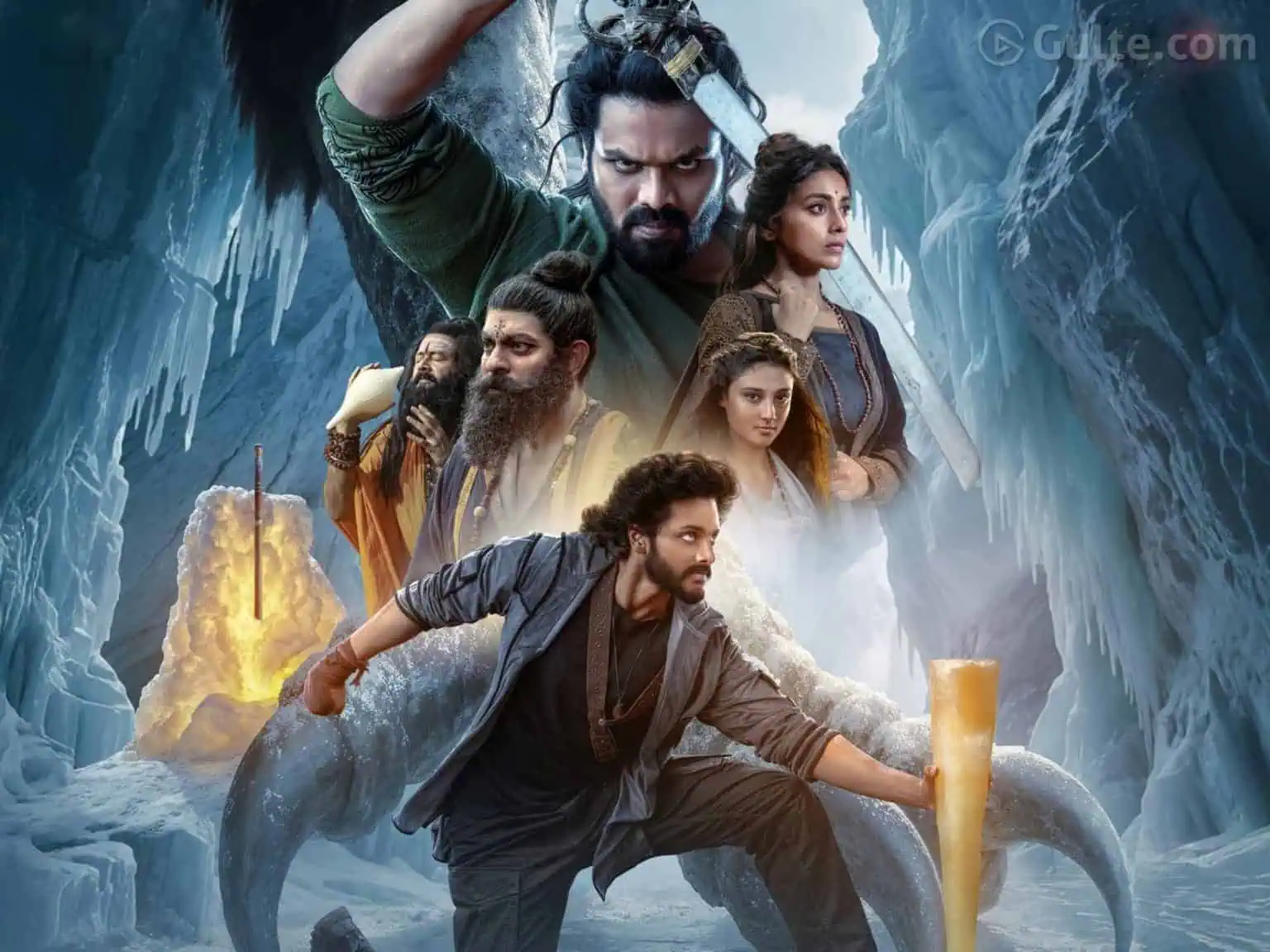
In an era where Indian cinema is increasingly embracing mythological fantasy, Mirai arrives as a bold, visually ambitious film that attempts to blend ancient legends with contemporary storytelling. Directed by Karthik Gattamneni and starring Teja Sajja and Manchu Manoj in pivotal roles, Mirai is a sprawling action-adventure that draws inspiration from Emperor Ashoka’s mystical legacy, Lord Rama’s divine weaponry, and anime-style world-building. This Mirai movie review explores the film’s strengths, its narrative depth, and the areas where it falters.
A Story Rooted in Myth and Destiny
At its core, Mirai is the story of Vedha (Teja Sajja), a young man with a troubled past who discovers he is destined to protect nine sacred scriptures created by Emperor Ashoka. These scriptures, imbued with divine power, are sought by Mahabir (Manchu Manoj), a dark sorcerer known as Black Sword, who aims to use them for world domination. Vedha’s journey from a street-smart hustler to a chosen warrior forms the emotional and narrative backbone of the film.
The film opens with a sweeping historical prologue that connects Ashoka’s remorse after the Kalinga war to the creation of the scriptures. This sets the stage for a high-stakes battle between good and evil, with Vedha representing hope and Mahabir embodying vengeance and chaos. The mythology is rich, and the screenplay cleverly weaves in references to Lord Rama’s weapon, Garuda Sampati, and ancient sages like Agastya, grounding the fantasy in familiar cultural touchstones.
Teja Sajja’s Transformation and Emotional Core
Teja Sajja delivers a compelling performance as Vedha, portraying the character’s internal conflict with sincerity and charm. Vedha is not a typical superhero—he’s flawed, reluctant, and often uses humor as a shield. His transformation into the Super Yodha is gradual and believable, anchored by moments of vulnerability and courage. The emotional arc involving his mother Ambika (Shriya Saran), who sacrifices her son for the greater good, adds depth to the narrative. Their bond, though explored in flashbacks, becomes the film’s emotional heartbeat.
Ritika Nayak as Vibha, the ascetic who guides Vedha, brings grace and conviction to her role. Her presence is steady and grounding, offering wisdom without overshadowing the protagonist. Shriya Saran’s portrayal of Ambika is poignant, especially in scenes that highlight her foresight and maternal sacrifice.
Manchu Manoj’s Villainy and Visual Grandeur
Manchu Manoj as Mahabir is a force of nature. His character is layered with pain, ambition, and philosophical musings. He describes himself as a “black hole born from a dying star,” a poetic metaphor that encapsulates his descent into darkness. While his motivations are clear, the film occasionally misses opportunities to delve deeper into his psyche. Nonetheless, Manoj’s screen presence is magnetic, and his final showdown with Vedha is one of the film’s most gripping sequences.
The visual design of Mirai is one of its standout features. From floating temples and mystical birds to time-traveling montages and cosmic duels, the film is a feast for the eyes. The VFX, while not flawless, is ambitious and often breathtaking. Scenes like the Garuda Sampati flight and the train battle sequence are particularly well-executed, showcasing the director’s flair for spectacle.
Anime Aesthetic and World-Building
Mirai borrows heavily from anime tropes—exaggerated action, stylized combat, and surreal landscapes. The film’s universe includes Yodhas, divine weapons, and pigeons used for communication, all set in a present-day world where physics takes a backseat to imagination. This blend of realism and fantasy creates a unique tone that may not appeal to everyone but certainly sets Mirai apart from conventional superhero fare.
The production design is meticulous, with each location—from the Himalayas to Morocco—crafted to evoke a sense of wonder. The costumes, props, and set pieces reflect a fusion of ancient and futuristic aesthetics, reinforcing the film’s mytho-sci-fi identity.
Music, Pacing, and Narrative Choices
Gowrahari’s background score elevates the film’s emotional and action sequences. The music is rhythmic, dramatic, and often ethereal, complementing the visuals without overpowering them. However, the film’s pacing is uneven. At 2 hours and 45 minutes, Mirai occasionally feels indulgent, especially in comedic subplots that disrupt the narrative flow.
Tracks featuring side characters like Getup Srinu and Raghu Ram, while intended to provide comic relief, sometimes undercut the seriousness of the main plot. The tonal shifts between humor and drama are not always seamless, and the film could have benefited from tighter editing.
A Cinematic Universe in the Making?
The post-credit scene hints at a larger universe, suggesting that Mirai may be the first chapter in a multi-film saga. This is an exciting prospect, especially given the richness of the mythology and the scope of the world-building. If future installments can refine the storytelling and maintain the visual ambition, Mirai could evolve into a landmark franchise for Telugu cinema.
Final Verdict
Mirai is a bold, imaginative film that dares to merge mythology, fantasy, and anime aesthetics into a single narrative. It’s not without flaws—uneven pacing, indulgent humor, and occasional VFX inconsistencies—but its heart is in the right place. Teja Sajja’s earnest performance, Manchu Manoj’s compelling villainy, and Karthik Gattamneni’s visionary direction make Mirai a memorable cinematic experience.
For fans of mythological fantasy, anime-inspired storytelling, and emotionally grounded heroism, Mirai offers a refreshing escape into a world where destiny, sacrifice, and divine power collide.


Leave a Reply